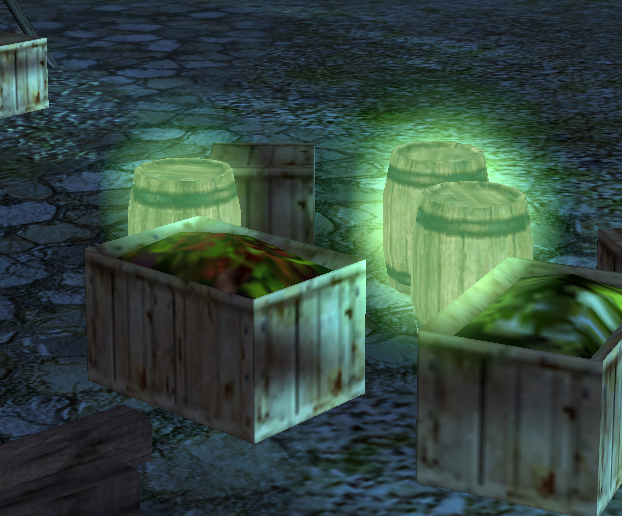-
Posts
1.403 -
Joined
-
Last visited
-
Days Won
24
Everything posted by vladislavbelov
-

Graphics Improvements
vladislavbelov replied to aeonios's topic in Game Development & Technical Discussion
As I said, add weather or decrease the current level of the penumbra effect. -

Graphics Improvements
vladislavbelov replied to aeonios's topic in Game Development & Technical Discussion
It loses details. Example, even on the bigger distance you may see more details: -

Graphics Improvements
vladislavbelov replied to aeonios's topic in Game Development & Technical Discussion
I already mentioned it (as wraitii too), that the effect is too blurry and unrealistic, and the shadow looks like a low quality. So it doesn't fit in our environment, until we have a weather settings. Or it should be decreased. -

Graphics Improvements
vladislavbelov replied to aeonios's topic in Game Development & Technical Discussion
I attached FXAA examples earlier, and textures are a little bit blurry (even with depths and normals). And as you said: Making the FXAA not blurry at all may be expensive. -
It will implemented after the PostprocManager refactoring.
-
As I said, I do not recommend to use it. So I do not want to put it in public (to prevent be an example for real things). If you want, I may PM you.
-

"Not implemented" error with campaign button
vladislavbelov replied to thekolian1996's topic in Bug reports
The main problem, that we can't check translations before the translator submit, other solutions are workarounds. There's no code in strings, there are tags. We can use them for color, font and other style. So this isn't the solution. -
I store glow bit in the alpha channel, so glow = length(rgb) > 0.0 && a == 0.0. And then just blur it on the bloom stage. The keyword is relatively. It's not more expensive than the DOF. So if make it as an option, then we wouldn't have a problem. As the DOF. But they all are nice addition. Sure, it's flexible.
-
I'll be a little boring: it's actually possible, but with hacks Example (radioactive barrels), no engine modifies here, only shaders and material changes: But it's hacky, so I do not recommend to use it and recommend to wait until we add a clear way for the glow effect
-

Profiling sandbox
vladislavbelov replied to wraitii's topic in Game Development & Technical Discussion
Btw, does the SM45 support pyrogenesis minimum requirements? I mean GCC 4.8.1, Windows XP, etc. -

"Not implemented" error with campaign button
vladislavbelov replied to thekolian1996's topic in Bug reports
@elexis I wrote a simple script: https://code.wildfiregames.com/P122 (it creates a test mod folder with the test page), it shows, that we have many errors in translations (including not included in the release). -

Some Advice concerning recording audio
vladislavbelov replied to Stan`'s topic in General Discussion
I agree with @niektb. I'm using the condenser microphone with an external audiocard for an acoustic guitar recording. And it catches even silent sounds from the street, so it requires little soft walls to block outside sounds. -

"Not implemented" error with campaign button
vladislavbelov replied to thekolian1996's topic in Bug reports
I meant functionality (that process these strings), sorry. By hand checking we may loose many corner cases. We don't want to run it for each commit, only for translation updates. So the performance difference is incomparable with the code problems: -

"Not implemented" error with campaign button
vladislavbelov replied to thekolian1996's topic in Bug reports
For full check. I.e. script doesn't guarantee existed symbols, you need to rewrite script for each change in the engine, it will test only small subset of functions. And as I said it's a bigger work to write a validate script with right logic than the page generator script. -

"Not implemented" error with campaign button
vladislavbelov replied to thekolian1996's topic in Bug reports
I think it requires more work (need to write JS to call C++) and has less checks, because no rendering there. -

"Not implemented" error with campaign button
vladislavbelov replied to thekolian1996's topic in Bug reports
There is a little hack, we can just run a special generated page, that contains all translated text. It guarantees that all texts will be tested with the real engine. -

Script to find non power of two textures
vladislavbelov replied to Stan`'s topic in Game Development & Technical Discussion
I agree to use POT textures, until we have a better solution. -

Script to find non power of two textures
vladislavbelov replied to Stan`'s topic in Game Development & Technical Discussion
OpenGL supports such textures since 2.0: https://www.khronos.org/opengl/wiki/NPOT_Texture. I think we need to have NPOT textures for UI, but then pack them into POT atlas. It should be faster and work better. It'd be good to implement after the GUI refactoring. -

Script to find non power of two textures
vladislavbelov replied to Stan`'s topic in Game Development & Technical Discussion
As I mentioned problem is not in the texture resolution, but in number of mipmaps. Also we have not only .png textures. -

People are using wrong directory for mods
vladislavbelov replied to Lion.Kanzen's topic in Bug reports
Ok, I'll try to reproduce it tomorrow for Ubuntu 16.04. -

People are using wrong directory for mods
vladislavbelov replied to Lion.Kanzen's topic in Bug reports
Could post your OS version, the game version and steps to reproduce the issue? -

People are using wrong directory for mods
vladislavbelov replied to Lion.Kanzen's topic in Bug reports
Does the modio installation work for you? Does the game print something in the console? -

People are using wrong directory for mods
vladislavbelov replied to Lion.Kanzen's topic in Bug reports
I wrote it and it shouldn't call the archive builder (there's a chance, that VFS has a strange behaviour, but it's small), it works with a temporary folder.



